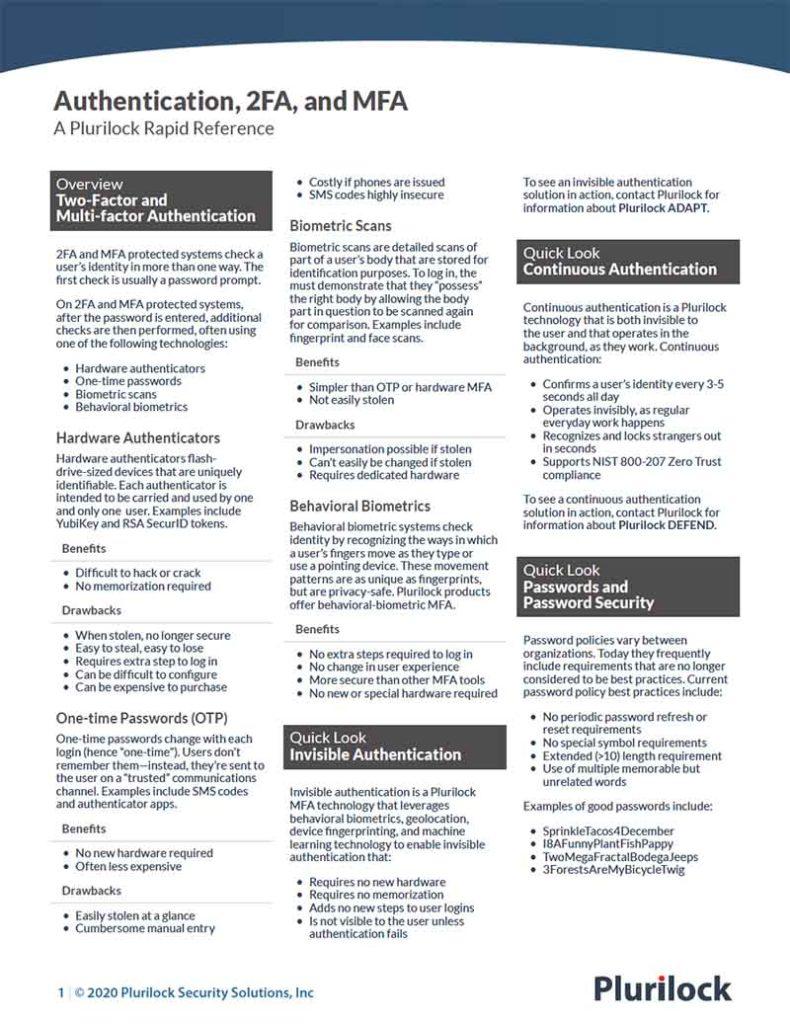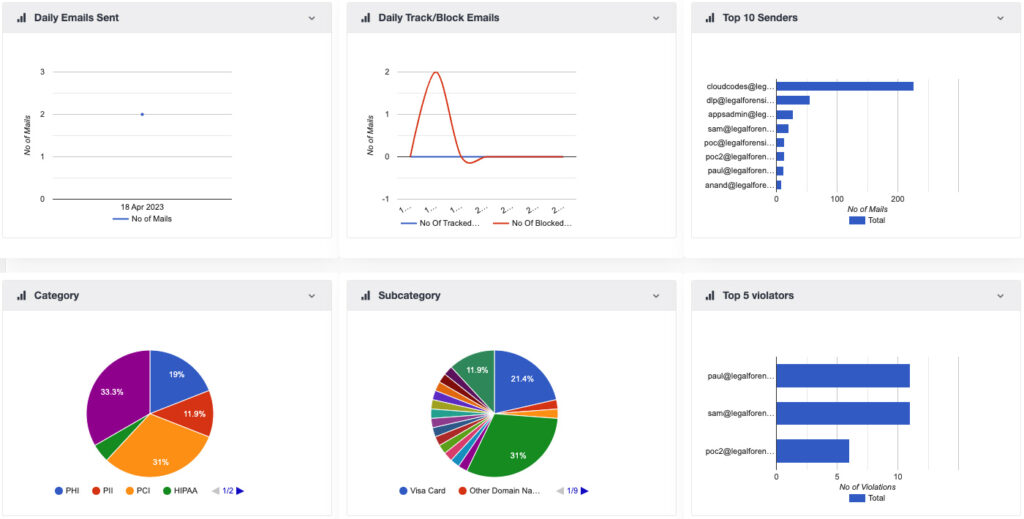Cybersecurity Reference > Glossary
How does Plurilock™ confirm user identities? How does it work?
Plurilock leverages a small amount of lightweight code to gather and analyze ambient, observable data about a user that is generated as they compute.
As Plurilock gathers and analyzes this data, it compares the results to past results for the same user. If the results are sufficiently similar, the user’s identity is confirmed. If the results are not sufficiently similar, the user’s identity is rejected.
Behavioral-biometric data is the primary body of data used by Plurilock products for authentication purposes. Specifically, the identity signals gathered and analyzed include keyboard timing patterns, location and travel data, network context, and system identity data in the case of Plurilock ADAPT™, or keyboard timing patterns and pointer interaction timing patterns in the case of Plurilock DEFEND™.
The data gathered and analyzed by Plurilock is highly individual, yet is also numeric, statistical, and non-biographical in nature—it can’t be used to reconstruct a user’s activities, preferences, interests, or real-world identity. The similarity and difference thresholds used in deciding whether to confirm or reject a user identity are configurable by system administrators, and the actions taken when identity is rejected are also configurable by system administrators.

2FA/MFA Rapid Reference
Authentication at a glance
Download the 2FA/MFA Rapid Reference now:
- 2FA and MFA basics and common solutions
- The benefits and drawbacks of each
- Glossary of authentication terms
2FA/MFA Rapid Reference
- 2FA and MFA basics and common solutions
- The benefits and drawbacks of each
- Glossary of authentication terms















